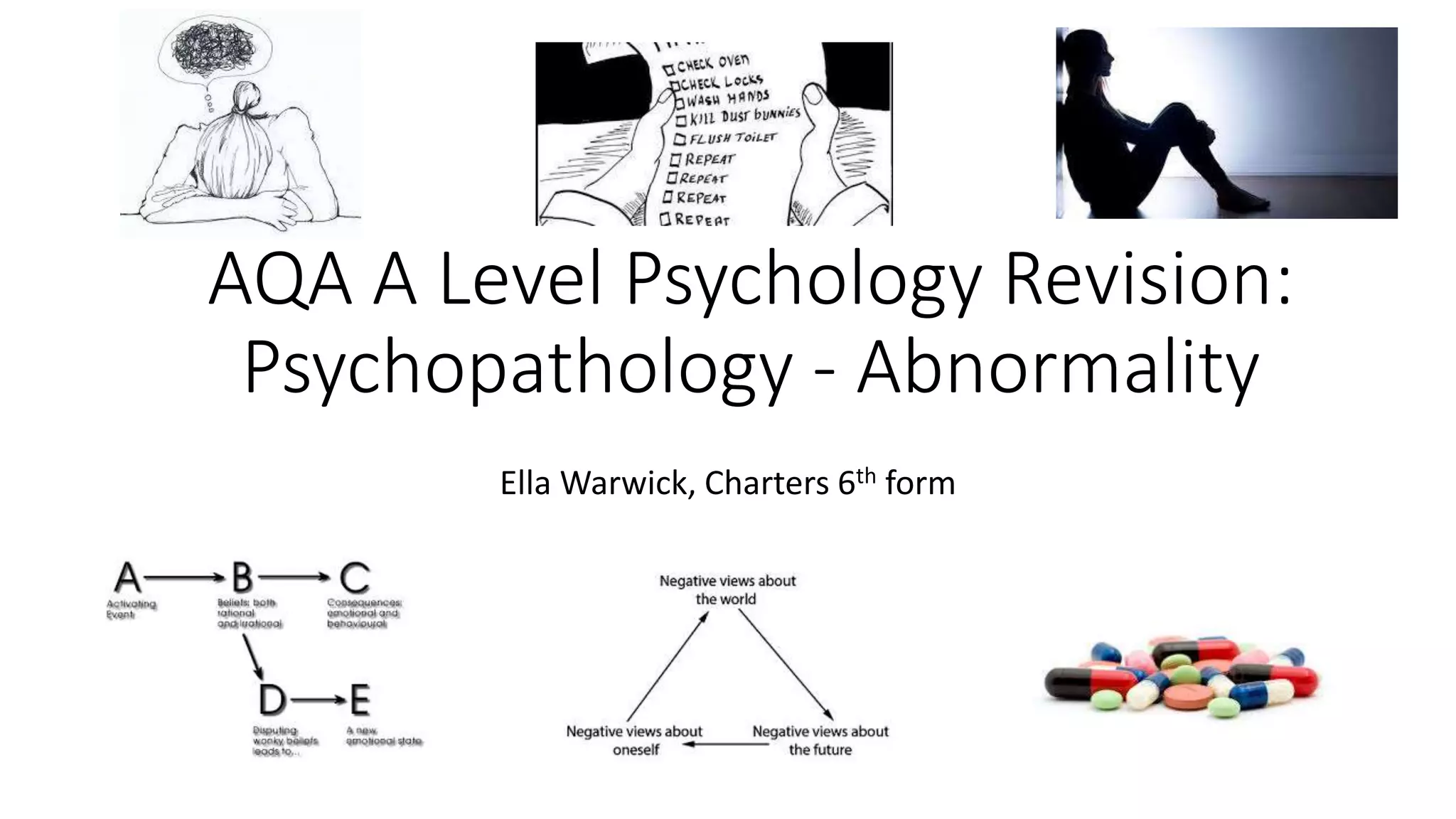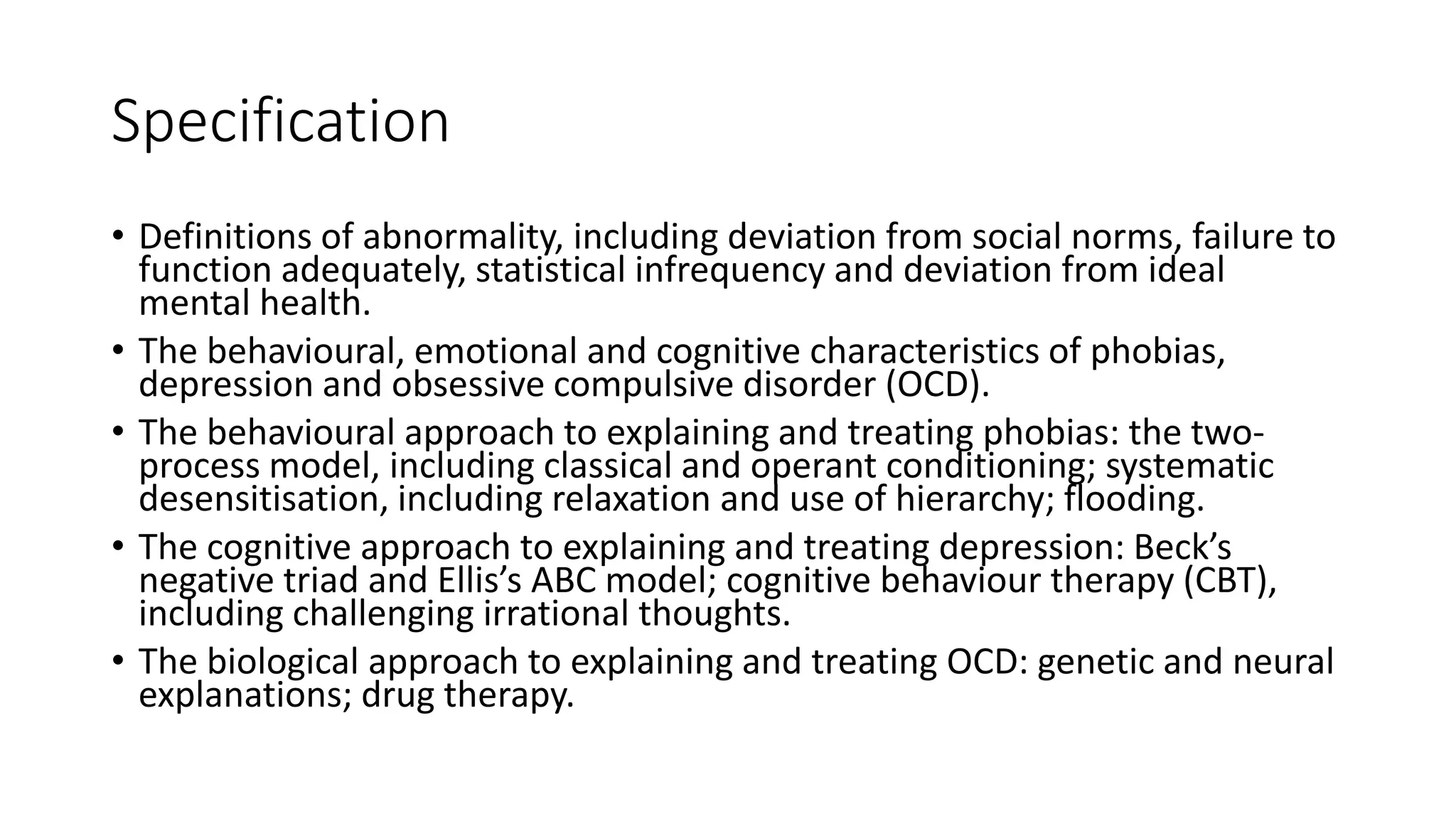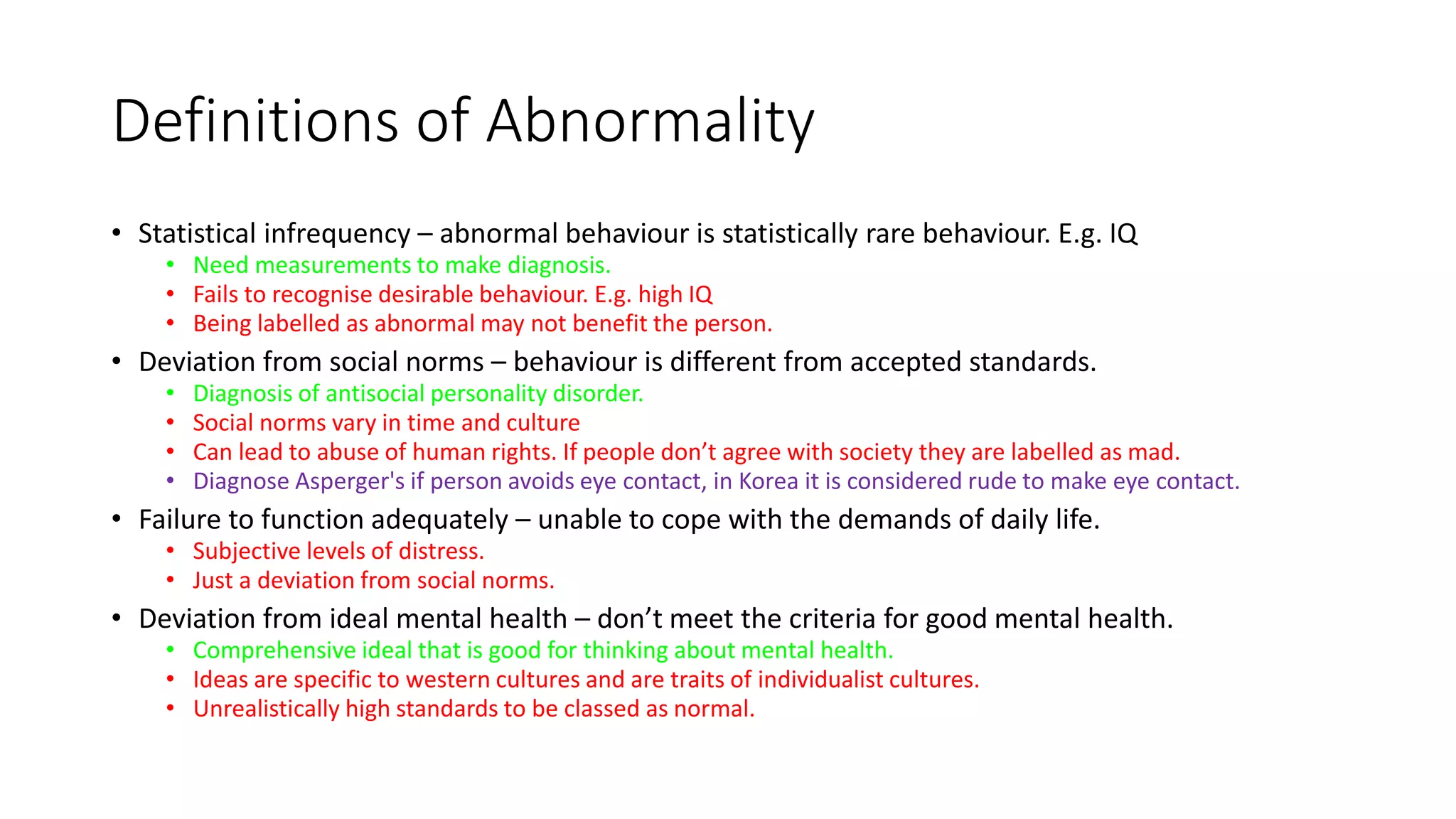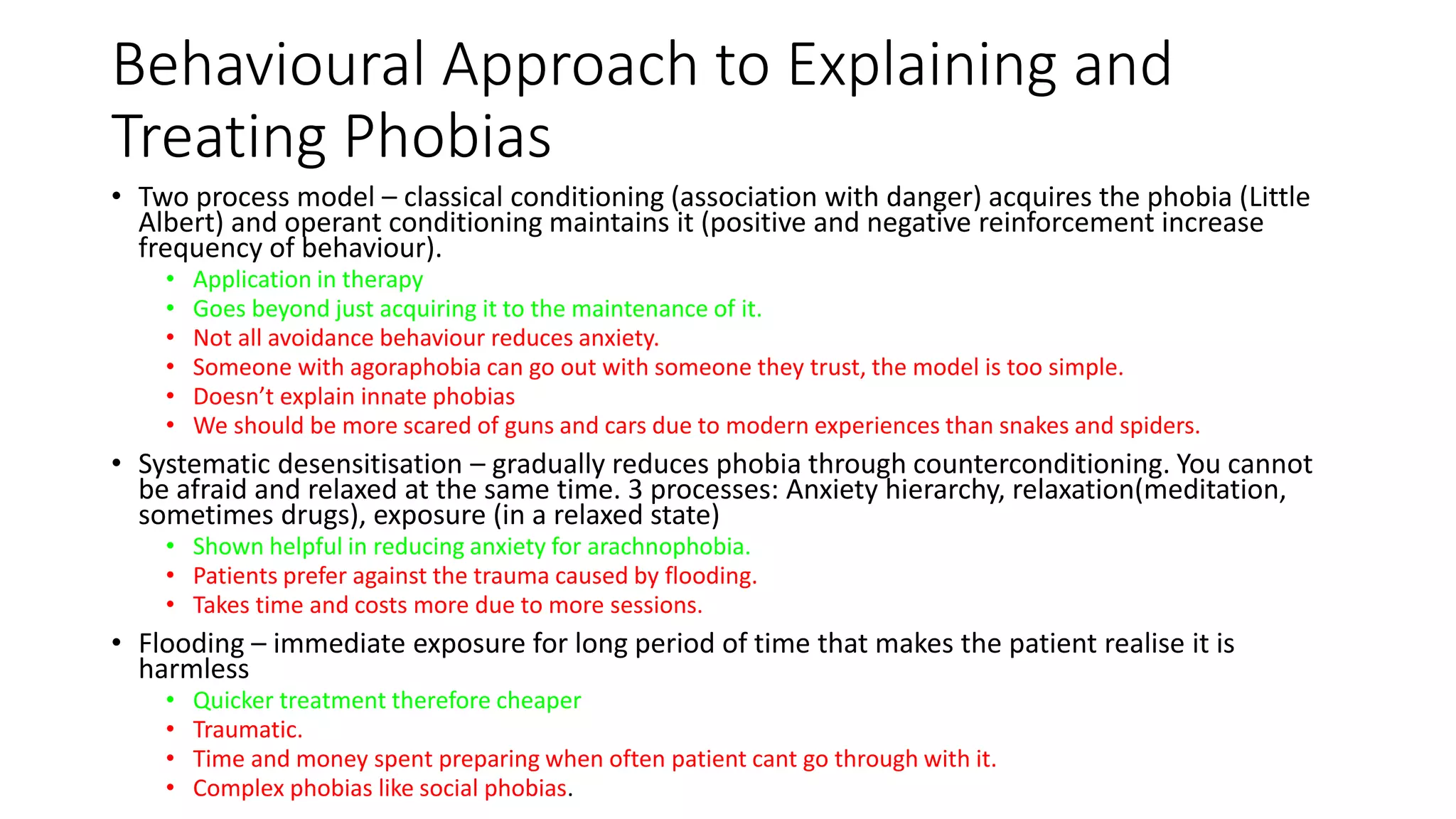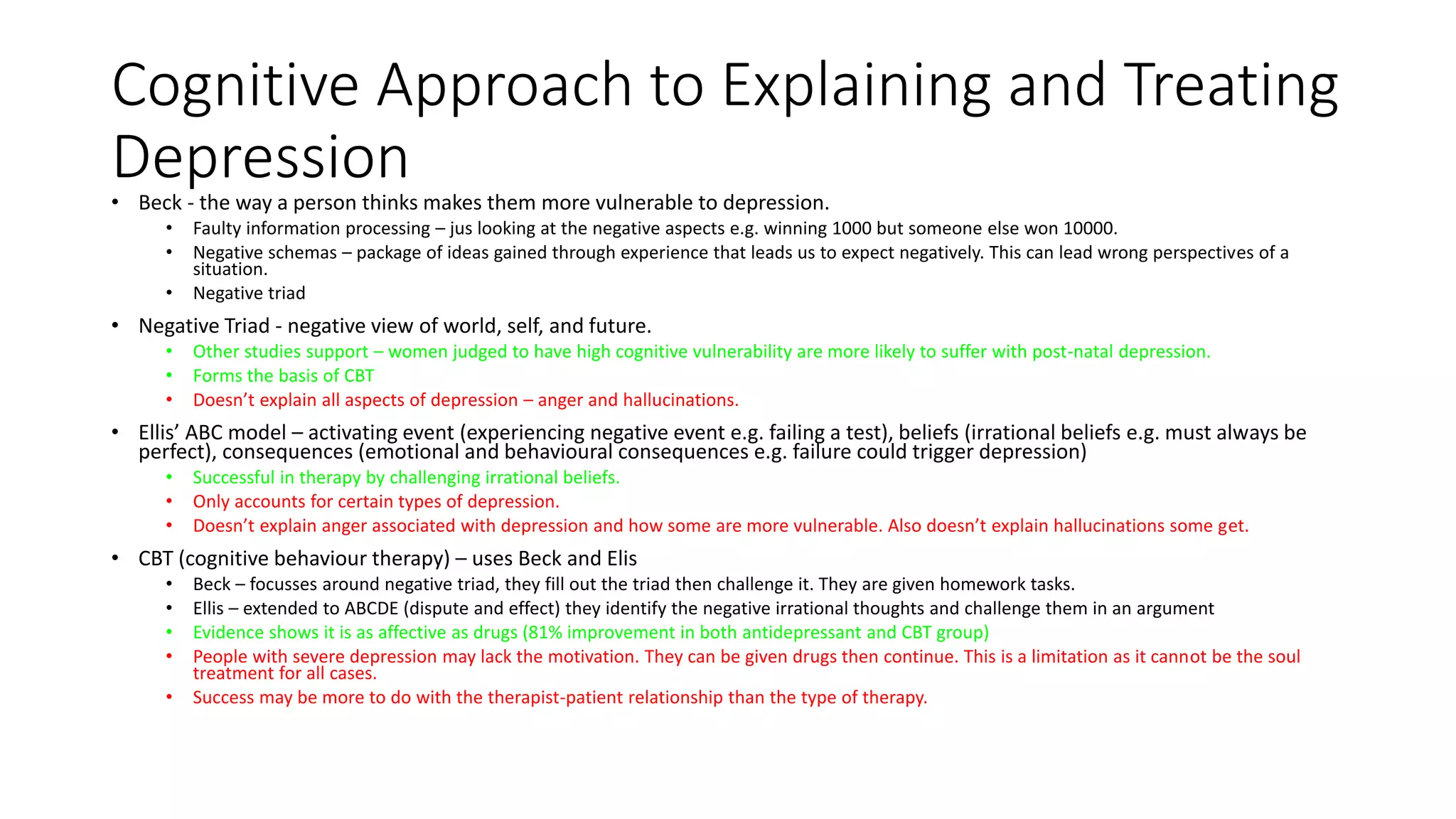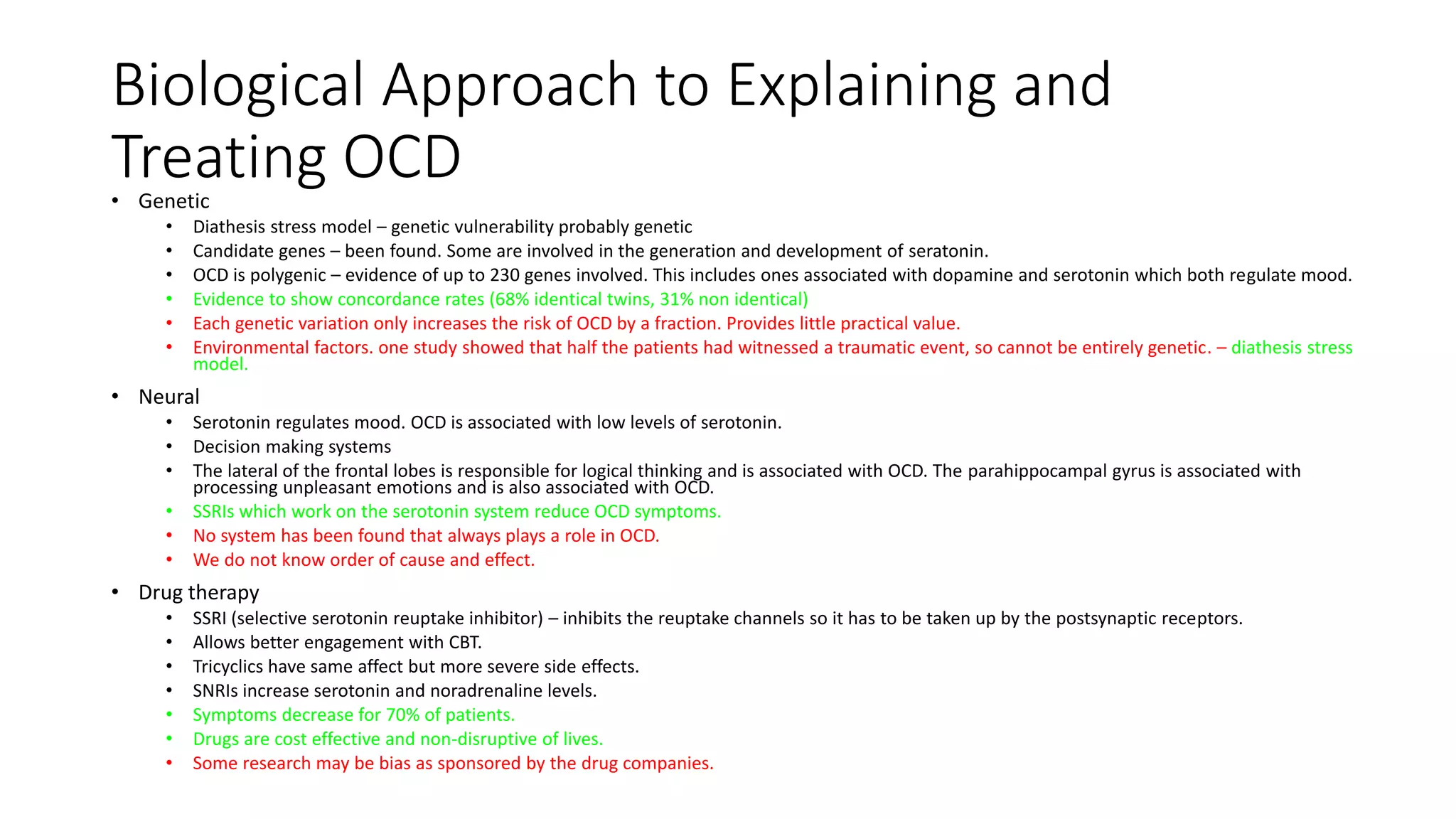This document provides an overview of the AQA A Level Psychology specification on psychopathology and abnormality. It discusses definitions of abnormality, characteristics of specific psychological disorders like phobias, depression and OCD. It also summarizes behavioral, cognitive and biological approaches to explaining and treating these disorders, including therapies like systematic desensitization, cognitive behavioral therapy, and drug therapies that target serotonin levels.
